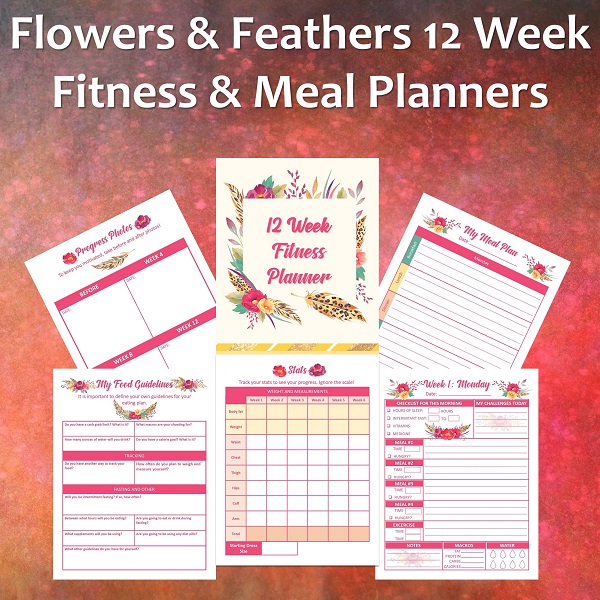
Whether you’re trying to improve your fitness or burn calories to lose weight, cardio is a great way to go about it. We all need cardio activity in our lives to bring about certain benefits and reduce the risk of a number of health problems. However, many of us are busy. In the time we do have available to workout, we want to make sure we’re getting the very best results. Here are 10 tips to make sure you will.
1) Find Something You Enjoy
Even if you hate exercise in general, there are probably still some activities you feel you enjoy better than others. If you find swimming dull, for example, then why not try power walking or running outdoors where you’ll enjoy the scenery? Or perhaps you don’t like running but you don’t mind cycling. You may have to try a few different activities before you find the one that works for you.
Remember, there are also ways to make otherwise boring activities more interesting. For example, you could listen to your favorite podcasts while out on a run, or you could start listening to an audiobook every time you go to the gym. If the gym is the only time you get to listen to the story then you may find yourself more motivated to get working out more often! Of course, you can always just bring your MP3 player to pump out motivating workout songs.
Another option is to vary your workouts. You don’t need to spend 30 minutes doing the same activity. You could try different gym machines for 10 minutes each, or you could do different activities on different days of the week to keep things interesting.
2) Workout With a Friend
If you’re the kind of person who finds it difficult to stay motivated to actually do your workouts then working out with a friend could be a good idea. That way, you are keeping each other accountable to stick to your workout schedule. Not only that, but you’ll also have someone going through the same thing as you – it’s good to have someone to talk to about your successes and struggles.
If you don’t have any friends who can join you on a workout then you may want to join a local group instead. There are plenty of local running or walking groups, or you could join an exercise class.
3) Head Outdoors
Heading outdoors for your workout can add much more variety to what you’re doing. Studies have also shown that exercising outside triggers the release of extra chemicals that’ll make you feel even better after every workout. There are loads of activities you can do outdoors, depending on the climate: running, fast walking, mountain biking, skiing, swimming and even yoga!
Working out on different terrains will also cause you to use different muscles. This can stop your body getting used to any one thing and help to maximize the number of calories burned after each workout.
4) Use Your Whole Body
If the purpose of your cardio is to burn as many calories as possible, then try to do exercises that use your whole body. Yes, you can burn calories on a recumbent exercise bike, but you’ll burn even more calories if you instead opt for an activity where your upper body isn’t supported. Running is a great example of this, and so is swimming.
You can even take extra measures to boost your workout, such as carrying weights on a power walk or while using a stair stepper, or wearing webbed gloves to your water aerobics class. This will all increase the number of muscles you’re using to burn more calories in the same time span.
5) Track Your Progress
Studies show that people are more likely to see success with their fitness or weight loss efforts when they track their progress. This means weighing yourself (not too frequently, though!), tracking how fast you’re going, how many reps you can do and so on. Seeing the improvement will help motivate you even more. You may even want to take some photos of your body before you get started.
There are a number of gadgets that can make tracking easier: pedometers, smartphone apps, heart rate watches and so on. It doesn’t have to be too complicated, though – you can do it manually if you’re on a budget.
Just be careful, however, to make sure you don’t get disheartened if you don’t see any noticeable progress right away. It will take time to lose weight and to get good at something. If you can’t see any progress in your stats, think about how you feel. Do you have more energy throughout the day? Are you going to bed feeling like you’ve really used your body? If so, then you are making progress!
6) Check Your Heart Rate
In order to get the greatest benefit from your workout, it’s important to exercise within your target heart rate zone. This will help to ensure your exercise is vigorous enough to burn calories, but not too vigorous that it’s dangerous for you.
You can estimate your target heart rate zone by subtracting your age from 220. The number you get is your “maximum heart rate”. Note that this is an estimate and you will need an individual test to get a completely accurate reading. When you’re first starting out you’ll want to exercise at around 50-60 of your maximum heart rate. As you improve you can this up this to 60-70% – this is known as the fat burning heart rate zone. You can go above this for endurance training.
So how do you measure your heart rate? You can do it manually by counting your pulse over 60 seconds. However, it’s far easier to use a heart rate watch or built in heart rate monitors on gym equipment. You should measure your heart rate while at rest, your heart rate during exercise, and your recovery heart rate.
7) Use Interval Training
High-intensity interval training (HIIT) is when you switch between high intensity and lower intensity activity within the same workout. For example, you might walk for 90 seconds and run for 60 seconds, and keep repeating this for a total of 20 minutes. Interval training in this way is known to help your body burn more calories, which is great if you’re trying to lose weight. It’s also a good way to boost your endurance and help your heart.
8) Include Strength Training
Although cardio is extremely important if you’re looking to lose weight or increase fitness, it’s not all you should be doing. The government recommends we include strength training at least two days a week – this means exercises designed to strengthen your muscles, rather than just burn calories. Strength training will build your muscles, and muscles burn more calories when at rest. However, if they’re hidden behind a layer of fat then you’re not going to look toned! This is why strength training and cardio should be done in combination.
9) Watch What You Eat
No matter how much you exercise, you simply can’t just eat whatever and however much you want! Sorry to break it to you! You do need to watch what goes into your body. This doesn’t mean going on a fad diet or cutting anything out of your life completely, but it’s important to make sure you eat enough fruit and veg, and that you are also giving your body energy for your workouts (so don’t starve yourself, either – it doesn’t work).
But when should you eat if you’re going for a workout? Most experts agree that, if you’re working out in the morning and want to boost the number of calories burned, it’s better to eat after your workout, or only eat something very small before your workout. Whatever time of day you do workout, try to eat something small within 30-60 minutes after finishing to give your body energy and help your muscles recover. And, whatever you do, resist the temptation to overeat after a workout. This is particularly common with swimming, since your body stays cool the whole time.
10) Be Consistent
The real secret to getting the most from your cardio workouts is to be consistent. If you don’t do it, you won’t see results. Choose a time and set days of the week and stick to your workout plan no matter what. No more excuses! Stay consistent and you will see results, even if they aren’t obvious right away.

